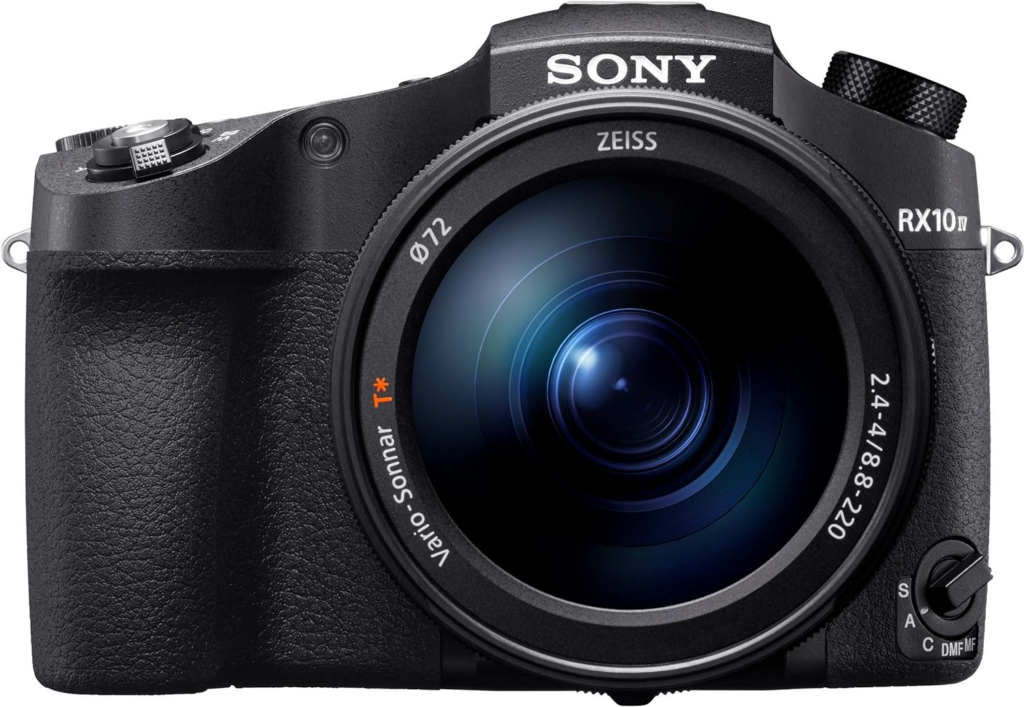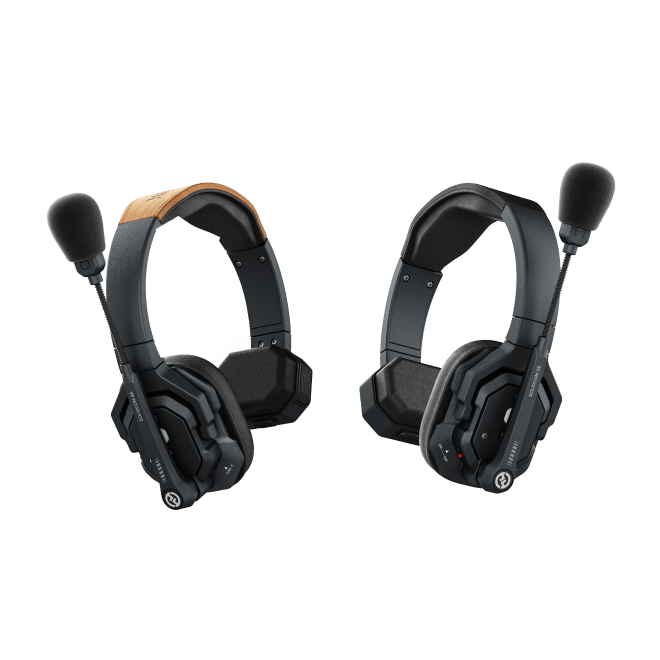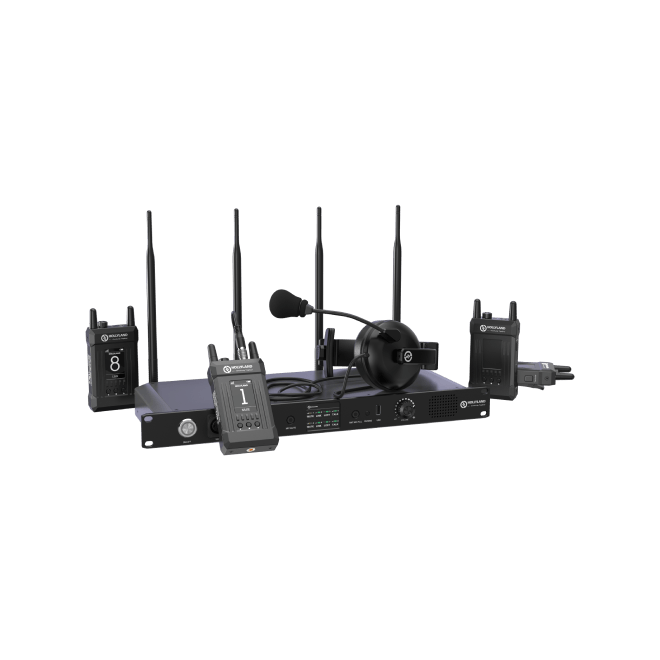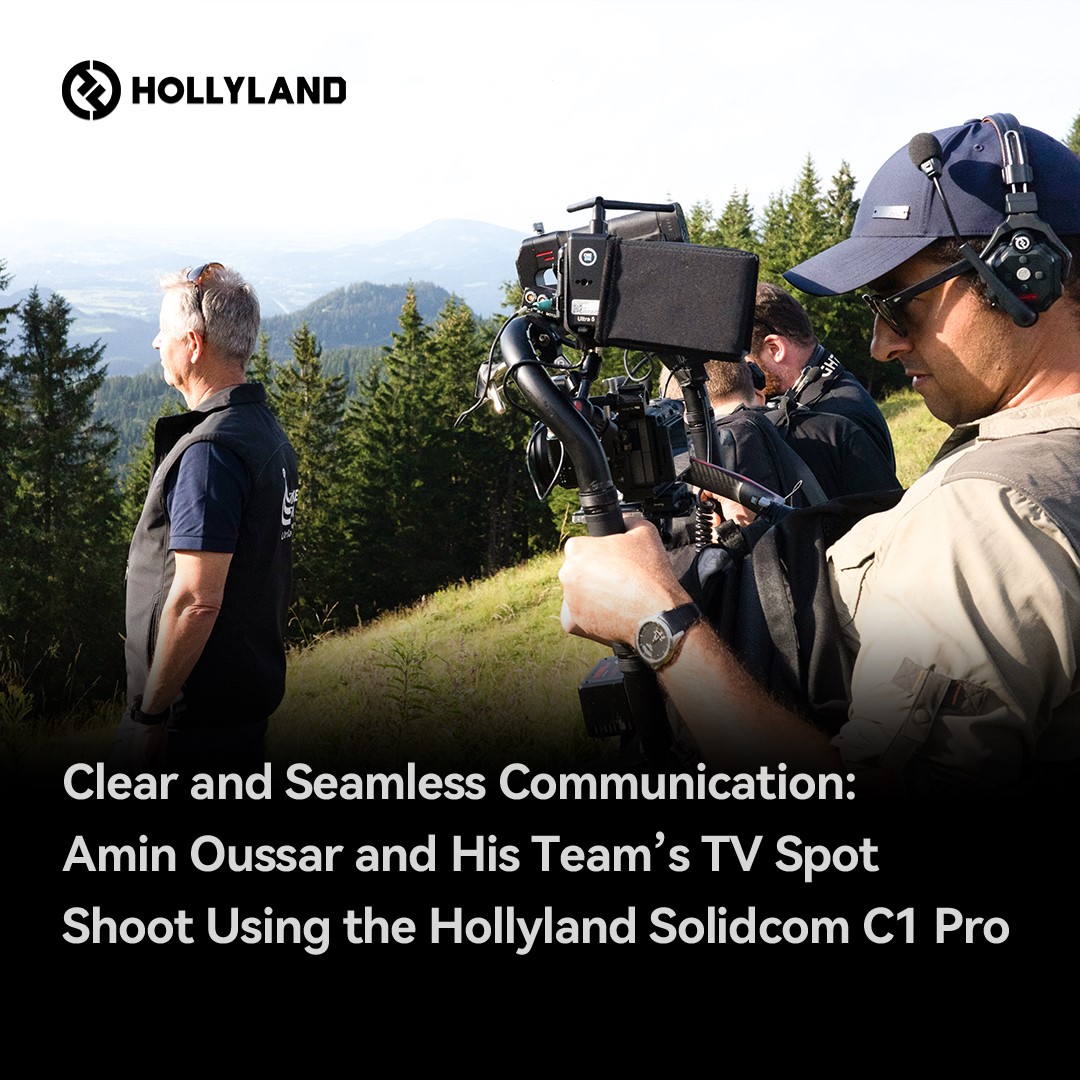Wildlife photography is a wildly popular (no pun intended) genre that demands a unique blend of technical expertise, patience, and a keen eye. As photographers, we’re constantly in pursuit of the perfect shot – be it the jungle king surveying its domain, a hummingbird frozen in mid-flight, or a bear wrestling with a salmon in an icy stream.
In this guide, our experts explore the best 8 cameras for wildlife photography in 2024, tailored specifically for new and ambitious professional photographers who want to elevate their craft with the right gear.
Our top pick this year is the Canon EOS R5, a mirrorless camera that combines a 45-megapixel sensor, lightning-fast autofocus, and an impressive burst shooting rate of up to 20 frames per second – essential for capturing the split-second action of the wild.
This list covers a diverse range of cameras designed to cater to different styles, budgets, and skill levels from trusted brands like Nikon, Sony, and Fujifilm to various price points. Let’s get right into it!
1. Canon EOS R5 Mirrorless: Overall Best Choice

What We Like
- High-resolution 45MP sensor captures lots of detail
- Fast 20fps burst mode with electronic shutter freezes action
- Advanced subject tracking AF with 1,053 selectable points
- 8K 30p RAW video recording capability
- In-body image stabilization smooths handheld footage
What We Don’t Like
- Recording time limits for 8K and 4K video
- Average 4K video quality compared to competitors
Recommended Wildlife Photography Lenses for the Canon EOS R5
- Telephoto lenses-Canon RF 100-400mm f/5.6-8 IS USM, Canon RF 70-200mm F2.8L IS USM
- Macro lenses-Canon RF 100mm F2.8L Macro IS, Canon RF 85mm F2 Macro IS STM
- Wide angle lenses-Canon RF 16mm F2.8 STM, Venus Argus 35mm F0.95 FF, Canon RF 24mm F1.8 IS
The Canon EOS R5 is a versatile full-frame mirrorless camera well-suited for wildlife photography. Its 45-megapixel sensor captures highly detailed images perfect for cropping in on distant subjects. The fast 12fps mechanical and 20fps electronic shutter help freeze action, whether you are shooting a sprinting cheetah or a hummingbird’s wings flapping.
The autofocus system uses 1,053 selectable points with Dual Pixel CMOS AF II technology. This advanced focus tracks moving subjects impressively, even erratic birds in flight. Its Deep learning algorithms also make the autofocus smart and accurate.
For video, the R5 can record 8K 30p RAW internally – very high resolution. The 5-axis in-body image stabilization works well for smooth handheld footage. However, there are recording limits on 8K and 4K that videographers should be aware of.
The R5 has a recording time limit of 29 minutes and 59 seconds. However, recording for 8K formats stops at 20 minutes, and 4K 120p (Full Sensor Width) stops at 15 minutes. You can restart recording immediately by pressing the camera’s record button again after the timer runs out.
Several Canon RF lenses pair nicely with the R5 for wildlife uses. The 100-400mm and 70-200mm telephotos allow you to get close to distant animals. The 100mm and 85mm macros are great for tiny critters and details. And wider-angle RF 16mm or 24mm lenses capture environmental portraits.
The Canon EOS R5 excels with its high-resolution sensor, fast burst shooting, sharp autofocus tracking, and 8K video – though 4K video is average. Pair it with the right RF lens for a very capable wildlife camera kit.
2. Olympus OM SYSTEM OM-1 Mirrorless Camera: Best for Adventure

What We Like
- The compact and lightweight Micro Four Thirds system is portable
- 20MP stacked sensor with 120fps readout captures fast action
- Advanced AI-powered cross-quad pixel phase-detect autofocus
- 5-axis in-body image stabilization aids handheld shooting
- Highly capable 4K 60p 10-bit internal video with computational modes
- Rugged, weather-sealed design for outdoor adventure
- Large 5.76m-dot EVF and fully articulating touchscreen
- Optimized Olympus lens selection including telephoto and macro options
What We Don’t Like
- Limited battery life of around 520 shots per charge
- Menu system and controls can take time to learn
Recommended Wildlife Photography Lenses for OM SYSTEM OM-1
- Telephoto lenses-OM System 40-150mm F4.0 PRO, Panasonic 100-300mm F4-5.6 OIS, Olympus 150-400mm F4.5 TC 1.25x IS
- Macro lenses-Olympus ED 60mm f2.8 Macro, OM System 90mm F3.5 Macro, Olympus 30mm F3.5 Macro
- Wide angle lenses-Olympus ED 9-18mm f4.0-5.6, Olympus ED 7-14mm F2.8 PRO, Panasonic 10-25mm F1.7 ASPH
The Olympus OM SYSTEM OM-1 is a compact and lightweight Micro Four Thirds mirrorless camera well-suited for all your outdoor adventure-style wildlife photography. Its 20MP stacked BSI Live MOS sensor offers quick readout speeds up to 120fps, great for fast action shots very common in natural environments.
The OM-1 uses advanced cross-quad pixel phase detection autofocus with deep learning AI subject detection. This lets it rapidly acquire focus on erratically moving subjects like birds and wildlife. The 5-axis in-body stabilization helps reduce camera shake too which helps in erratic wildlife shooting scenarios!
While the sensor is smaller than full-frame, computational modes like high-res shot and live ND simulation expand its capabilities. The camera also records very high-quality oversampled 4K 60p 10-bit video internally.
In addition to its compact size, the OM-1 has a tough, weather-sealed construction to handle the elements during outdoor shoots. The large 5.76m-dot EVF and fully articulating touchscreen will provide you with a clear view through inclement conditions when you are out in nature.
For lenses, Olympus offers a range of weather-resistant options great for the OM-1. The 40-150mm and 100-300mm telephotos give you plenty of reach for distant wildlife, with stabilization built-in. The 150-400mm with built-in 1.25x teleconverter extends that even further.
For macro, the 60mm and 90mm macro primes allow scrutinizing tiny details if you are shooting small animals or insects. The recommended ultra-wide zooms like the 7-14mm open up unique perspectives close to dodgy animals or dangerous ones! It offers all this while retaining a portable, lightweight overall kit.
The Olympus OM-1 is a very capable and adventure-ready Micro Four Thirds camera excellent for wildlife thanks to its speed, stabilization, tough build, and optimized MFT lens selection. It’s a great choice especially if you are starting out or prefer the pro-approach to photography that Olympus is known for.
3. Sony Alpha 1 Mirrorless: Choice Premium Option

What We Like
- 50MP full-frame BSI stacked sensor with 15 stops dynamic range
- Incredible speed – blackout-free 30fps burst with full AF/AE
- Advanced 759-point hybrid AF system with real-time Eye AF
- Oversampled 8K30p and 4K120p 10-bit internal video
- Silent, flicker-free electronic shutter up to 1/200 sec
- 5-axis in-body image stabilization works with any lens
- Large 9.44m-dot 0.64″ EVF with 240fps refresh rate
- Extensive connectivity options like 5GHz Wi-Fi and Ethernet
What We Don’t Like
- Third-party lenses affect burst rates
- Premium price tag
Recommended Wildlife Photography Lenses for the Sony A1
- Telephoto lenses-Sony FE 200-600 F5.6-6.3 G OSS, Sony FE 70-300mm F4.5-5.6, Sony FE 100-400mm F4.5-5.6 GM
- Macro lenses-Sony FE 90mm F2.8 Macro G OSS, Sony FE 50mm F2.8 Macro, Sigma 70mm F2.8 DG Macro
- Wide angle lenses-Sony FE 16-35mm F2.8 GM, Sigma 14-24mm F2.8 DG DN Art, Sony 12-24mm F2.8 GM
The Sony A1 is a powerhouse full-frame mirrorless camera capable of impressive resolution, speed, and video performance. Its 50MP Exmor RS BSI stacked CMOS sensor paired with the BIONZ XR processor can deliver sharp images with 15 stops of dynamic range for pro wildlife photographers.
The real edge in wildlife photography is speed – the A1 can shoot blackout-free bursts at up to 30fps while maintaining full autofocus and autoexposure. The advanced 759-point hybrid AF system tracks moving subjects like running predators in the African Savanna with incredible accuracy and tenacity using real-time AI-based Eye AF.
On the video side, the highly capable Sony Alpha 1 captures oversampled 8K30p and 4K120p internal recording, with the option for 16-bit raw output over HDMI. The electronic shutter is completely silent and flicker-free up to 1/200 sec. Sony’s 5-axis in-body stabilization helps reduce shake with any lens. And the large 9.44m-dot 0.64″ QXGA OLED Tru-Finder EVF provides a natural, blackout-free live view experience.
For lenses, the Sony E-mount has some great telephoto and macro options from Sony and third parties. The FE 100-400mm GM and 200-600mm reach out very far for distant wildlife. And compact primes like the FE 90mm Macro focus close for unbelievable detail.
The A1 is a professional-grade video and stills camera with few compromises. It is great for wildlife with its speed, AF, resolution, and stabilization. That said, we have to point out the fact that it comes at a premium price, and the limited long telephoto selection means adapting lenses. It’s great if you are serious about becoming a pro-level, award-winning wildlife photographer.
4. Nikon Z9 Mirrorless Camera: Pro Wildlife Photography

What We Like
- 45.7MP full-frame stacked BSI sensor for incredible resolution
- Blazing speed up to 30fps with a huge buffer depth
- Advanced 493-point hybrid AF with deep learning subject tracking
- Uncropped 8K30p and 4K120p 10-bit internal video recording
- Silent flicker-free electronic shutter to 1/32,000sec
- 4-axis sensor-shift image stabilization for smooth handheld footage
- Robust build with integrated vertical grip and dual CFexpress cards
- Native Nikon Z lens selection optimized for wildlife photography
What We Don’t Like
- The rear LCD only tilts, with no full articulation
- Limited availability due to low production numbers
Recommended Wildlife Photography Lenses for the Nikon Z9
- Telephoto lenses-Nikon Z 100-400mm F4.5-5.6 VR, Nikon Z 70-200 F2.8 VR S, Tamron 150-500mm F5-6.7 VC VXD, Nikon Z 180-600mm F5.6-6.3 VR
- Macro lenses-Nikon Z 105mm F2.8 VR S, Nikon Z 50mm F2.8, Laowa 85mm f5.6 2x Macro
- Wide angle lenses-Samyang MF 14mm F2.8 Z, Nikon Z 28mm F2.8 SE, Nikon Z 28mm F2.8, Nikon Z 35mm F1.8 S, Venus Argus 35mm F0.95 FF
The Z9 is the most technologically advanced Nikon mirrorless to date and an exceptional camera for professional wildlife needs when price is not a factor. It’s Nikon’s flagship professional full-frame mirrorless camera, aimed at demanding photographers who need exceptional speed, image quality, and video capabilities for challenging subjects like wildlife.
At its heart is a 45.7MP stacked BSI CMOS sensor paired with the powerful new EXPEED 7 processor. This delivers pro-grade burst wildlife shooting performance – up to 20fps raw and 30fps JPEG – with a huge buffer capacity ideal for capturing split-second wildlife moments.
The hybrid AF system uses 493 selectable points augmented by Deep Learning AI algorithms for accurate subject tracking that can even lock onto animal eyes and faces. The electronic shutter is flicker-free up to an incredible 1/32,000sec for total silence.
The Nikon Z9’s Video specs are outstanding – 8.3K 60p N-RAW, 8K30p, and 4K120p internal recording with 10-bit depth. Combined with 4-axis stabilization on the sensor, it captures smooth handheld shots at high resolutions and frame rates.
For wildlife photography, the Z9 pairs well with Nikon’s expanding Z-mount lens lineup. Fast telephotos like the 100-400mm and 180-600mm provide the reach you need in the wild. The 105mm and 50mm macros are great for close-ups. And wide-angle zooms will help you orient animals within their environment.
The Nikon Z9 is an extremely powerful camera system aimed at pro wildlife photographers who need ultimate resolution, speed, AF tracking, stabilization, and video. However, it carries a premium price tag requiring serious professional use and a big budget. If you are at this level or don’t mind spending the bucks, then this is the camera for you!
5. Fujifilm X-H2S- Wildlife Photography on a Budget

What We Like
- Excellent 26MP X-Trans stacked APS-C sensor with fast readout speeds
- Up to 40fps burst shooting with the electronic shutter
- Reliable 425-point hybrid AF system with AI subject/animal detection
- Uncropped 6.2K 30p and 4K 120p 10-bit internal video
- 5-axis in-body image stabilization for smooth handheld footage
- Robust, weather-sealed construction for outdoor shooting
- Large 5.76m-dot EVF and vari-angle touchscreen LCD
- Growing native X-mount lens options from Fuji and third-parties
What We Don’t Like
- No internal RAW video recording requires HDMI for ProRes RAW
- Manual controls and user interface take time to learn
- Single XQD/CFexpress card slot, no SD card backup
Recommended Wildlife Photography Lenses for the Fujifilm X-H2S
- Telephoto lenses-Fujifilm XF 70-300 F4-5.6 R, Fujifilm XF 100-400mm F4.5-5.6, Fujifilm 55-200mm F3.5-4.8 R LM OIS, Sigma 100-400mm F5-6.3 OS, Fujifilm XF 150-600mm F5.6-8 R, Fujifilm 50-140mm F2.8 R OI.
- Macro lenses-Fujifilm XF 30mm f/2.8 R LM W Macro, Fujifilm 60mm F2.4 R Macro, Fujifilm XF 60mm f/2.4 R Macro.
- Wide angle lenses-Fujifilm XF 10-24mm F4 R, Tamron 11-20mm F2.8 Di III-A, Fujifilm XF 10-24mm F4 R WR, Sigma 10-18mm F2.8 DC DN C, Fujifilm XF 8-16mm F2.8 R LM WR.
The Fujifilm X-H2S delivers tremendous performance for both multimedia photo and video at a more accessible price point than full-frame flagships- perfect if you are a beginner in wildlife photography. It is a highly capable APS-C mirrorless and well-suited for both stills photography and video.
Its 26.1MP X-Trans stacked BSI sensor can deliver excellent image quality and impressive readout speeds if used well. For stills, the mechanical shutter can shoot up to 15fps while the electronic option works at 40fps. The 425-point hybrid AF system with AI subject detection rapidly locks onto moving wildlife using deep learning algorithms.
On the video side, the X-H2S captures uncropped 6.2K up to 30p and 4K120p using the full sensor width. It has a 10-bit internal recording with F-Log and can output 12-bit ProRes RAW over HDMI. 5-axis in-body stabilization smooths handheld footage.
The rugged, weather-sealed magnesium alloy body is designed for outdoor use. A large 5.76m-dot OLED viewfinder and vari-angle touchscreen provide a clear view in any orientation. Dual card slots utilize fast CFexpress and UHS-II SD media.
For wildlife, the growing Fujinon X-mount ecosystem offers some excellent lens choices. Telephoto zooms like the 100-400mm and fast 50-140mm f/2.8 will provide you with versatile reach in the wild. The 150-600mm super tele brings you close to animals while the macro primes we recommended above will help reveal tiny details in small animals like ants.
While not full-frame, the X-H2S packs impressive performance into a rugged APS-C body at a more accessible price point than flagships. It’s a great option for wildlife photographers on a budget.
6. Canon EOS R3 Mirrorless Camera

What we like
- Advanced autofocus system with 1,053 AF points and animal eye detection for reliable subject tracking
- High-speed continuous shooting of up to 30 fps with electronic shutter
- Excellent image quality from a 24.1-megapixel full-frame sensor
- Low noise performance at high ISOs
- Weather-sealed and rugged body for harsh environments
- Compatible with a range of telephoto and macro lenses for wildlife photography
- Eye control autofocus for intuitive focusing point selection
What we don’t like
- Lower resolution compared to some competitors
Recommended Wildlife Photography Lenses for the Fujifilm X-H2S
- Telephoto lenses-Canon RF 100-500mm F4.5-7.1L, Canon RF 70-200mm F2.8L IS USM, Canon RF 100-400mm F5.6-8, Canon RF 70-200 F4L IS USM, Canon RF 100-300mm f2.8 L IS USM, Canon RF 200-800mm F6.3-9
- Macro lenses-Canon RF 85mm F2 Macro IS STM, Canon RF 100mm F2.8L Macro IS, Laowa 85mm f5.6 2x Macro
- Wide angle lenses-Canon RF 15-35mm F2.8L IS USM, Canon RF 14-35mm F4L IS USM, Canon RF 15-30mm F4.5-6.3 IS, Canon RF 10-20mm F4 L IS STM
The Canon EOS R3 is a capable full-frame mirrorless camera well-suited for wildlife photography. Its advanced autofocus system with 1,053 AF points, including eye detection, ensures reliable subject tracking even with fast-moving wildlife subjects.
The R3’s high-speed continuous shooting of up to 30 fps with the electronic shutter allows capturing decisive moments and bursts of action, making it easier to get the perfect shot. The rugged, weather-sealed body ensures reliable performance in the field, where you are likely to face harsh environments as a wildlife photographer.
It is equipped with a back-illuminated 24.1-megapixel sensor and DIGIC X processor providing excellent image quality, low noise performance at high ISOs, and fast data processing, which is crucial when working in challenging lighting conditions common in wildlife photography.
Wide-angle lenses like the Canon RF 15-35mm F2.8L IS USM can be handy for environmental portraits or capturing the subject in its natural habitat. The camera’s eye control autofocus allows intuitive focusing point selection, making it easier to track wildlife subjects while maintaining a comfortable shooting position.
7. Nikon Coolpix P1000 -Budget Option for Wildlife Photography Amateurs

What we like
- Impressive 24-3000mm equivalent zoom range
- 4K video recording capabilities
- Vari-angle LCD screen for versatile shooting angles
- Manual control options (Aperture, Shutter, Manual)
- SnapBridge connectivity for easy image sharing
- A relatively affordable price point for a Superzoom camera
What we don’t like:
- Limited ISO sensitivity range (100-6400)
- No weather sealing or rugged construction
The Nikon Coolpix P1000 is a budget-friendly bridge camera that offers an impressive 24-3000mm equivalent zoom lens, making it a great choice for amateur wildlife photographers on a tight budget. You can capture distant subjects like birds, animals, or landscapes as if they were up close, all without the need to change lenses or carry bulky equipment with its native zoom.
While the 16MP 1/2.3-inch sensor may not match the image quality of larger sensors found in more expensive cameras, it still provides decent image quality, especially when paired with the camera’s EXPEED image processor and ISO range of 100-6400. This makes the P1000 capable of capturing wildlife in various lighting conditions, from bright daylight to dimly lit forests.
The P1000 is not a professional-grade camera but its 4K video capabilities, vari-angle LCD screen, and manual control options give you the flexibility to experiment with different shooting techniques and settings. In addition to that, features like SnapBridge connectivity and the built-in electronic viewfinder make it user-friendly and convenient for amateur wildlife photographers.
8. Sony Cyber‑Shot RX10 IV

What we like
- 25x optical zoom lens with a 24-600mm focal range
- Large 1-inch 20.1MP stacked CMOS sensor for excellent image quality
- Fast 0.03-second autofocus acquisition speed
- 315 phase-detection AF points covering 65% of the frame
- 24 fps continuous shooting with AF/AE tracking
- Optical SteadyShot image stabilization
- ZEISS Vario-Sonnar T* lens for high image quality throughout the zoom range
What we don’t like
- Lacks of weather sealing
- Limited battery life
The Sony Cyber-shot RX10 IV is a versatile bridge camera that offers impressive features if you are an amateur wildlife photographer. With its 25x optical zoom lens, you can capture distant subjects without compromising image quality, thanks to the large 1-inch 20.1MP stacked CMOS sensor. This sensor also enables fast readout speeds, allowing for an excellent autofocus speed of just 0.03 seconds – perfect for capturing fast-moving wildlife (like birds).
The RX10 IV has an impressive 315 phase-detection autofocus points that cover approximately 65% of the frame, ensuring reliable subject tracking even when your subject is not centered. The 24-fps continuous shooting with AF/AE tracking further enhances your ability to capture critical moments, like a bird taking flight or a cheetah sprinting.
The camera’s Optical SteadyShot image stabilization system is invaluable when shooting handheld at the long end of the zoom range, which is especially useful in low-light conditions commonly encountered in wildlife photography. The ZEISS Vario-Sonnar lens provides excellent image quality throughout the entire 24-600mm focal length range, giving you the versatility to capture wide landscapes, environmental shots, and super-telephoto reach.
Choosing the Right Lenses for Wildlife Photography
Save for the non-interchange digital cameras we include in this guide, all the cameras need to be paired with the right lenses for the best results. Lenses are everything in wildlife photography. You can have the best, most expensive camera body but end up with mediocre wildlife photos with the wrong lenses.
For wildlife photography, a telephoto lens in the range of 300-600mm is essential. It allows you to capture close-up shots of distant or skittish animals without disturbing them, magnifying the subject while enabling a shallow depth of field to isolate it from the background. A macro lens, such as a 100mm or 180mm, is also invaluable for extreme close-ups of tiny creatures like insects or reptiles, revealing intricate details and textures at 1:1 magnification.
Wide-angle lenses from 16-35mm provide versatility. They capture expansive landscapes and environmental portraits, showcasing wildlife in their natural habitats and context. A wide-angle lens offers a broader perspective, telling a more complete story and allowing for flexible compositions even when subjects are relatively close.
Final Remarks
In conclusion, selecting the perfect camera for wildlife photography in 2024 requires careful consideration of your specific needs and budget. Features like high-resolution sensors, advanced autofocus systems, and impressive zoom capabilities are essential but don’t overlook factors like weather sealing, battery life, and lens compatibility. Happy shooting!
































